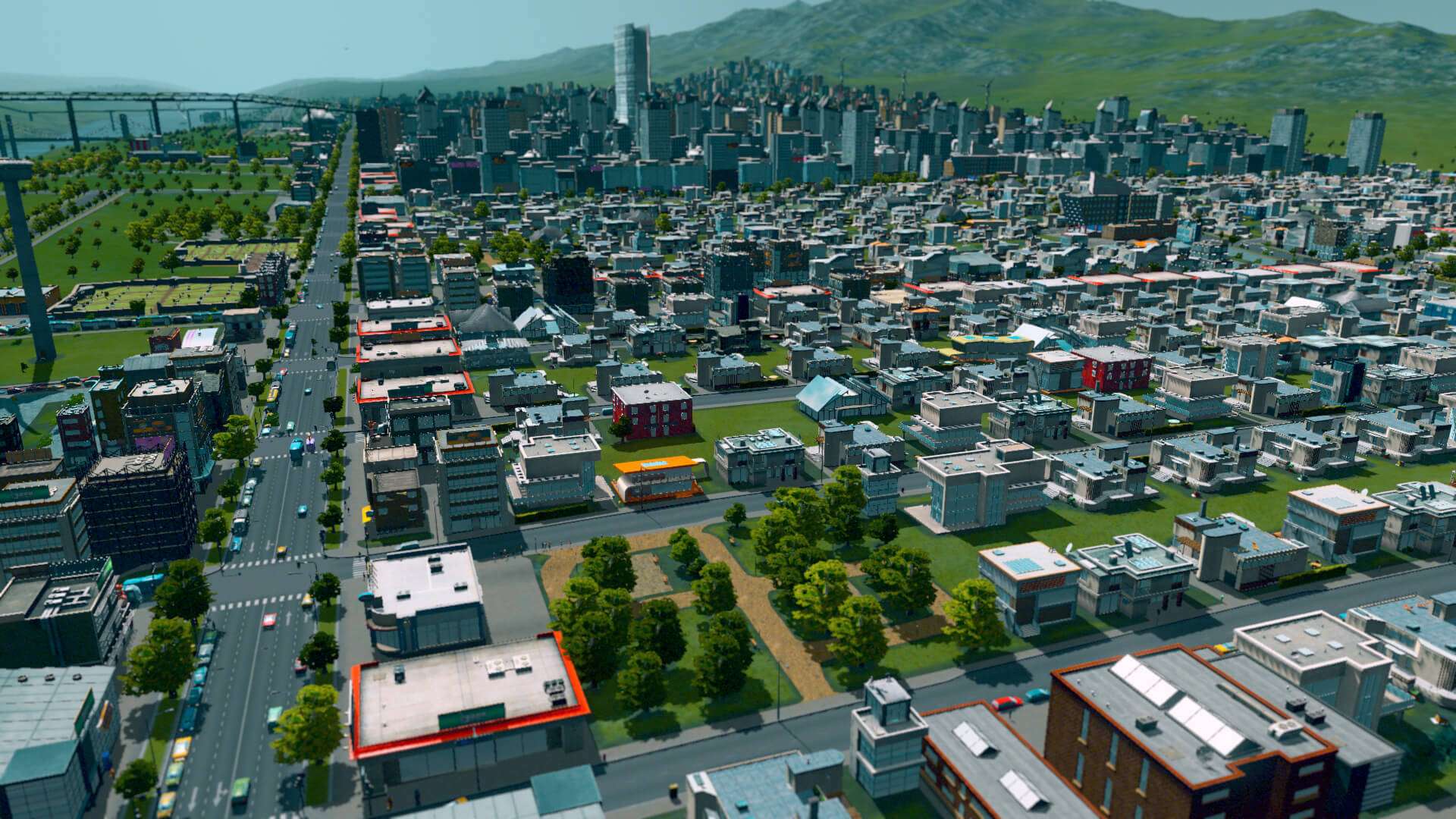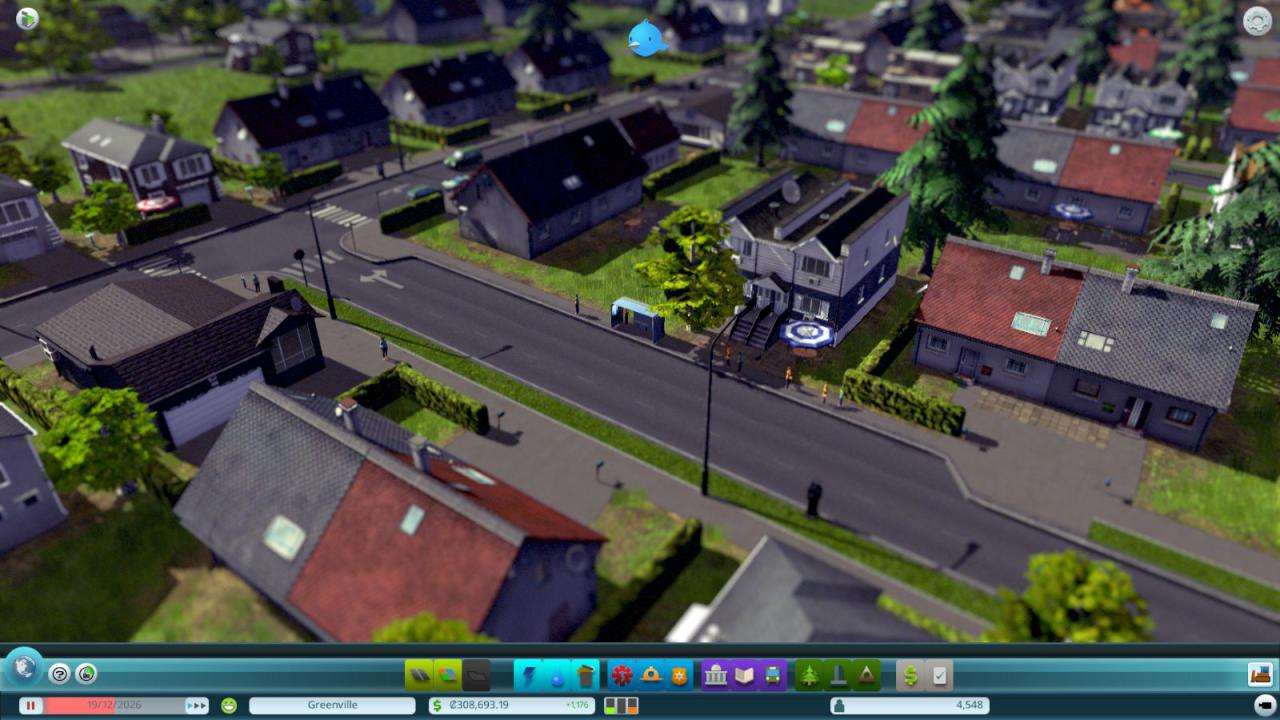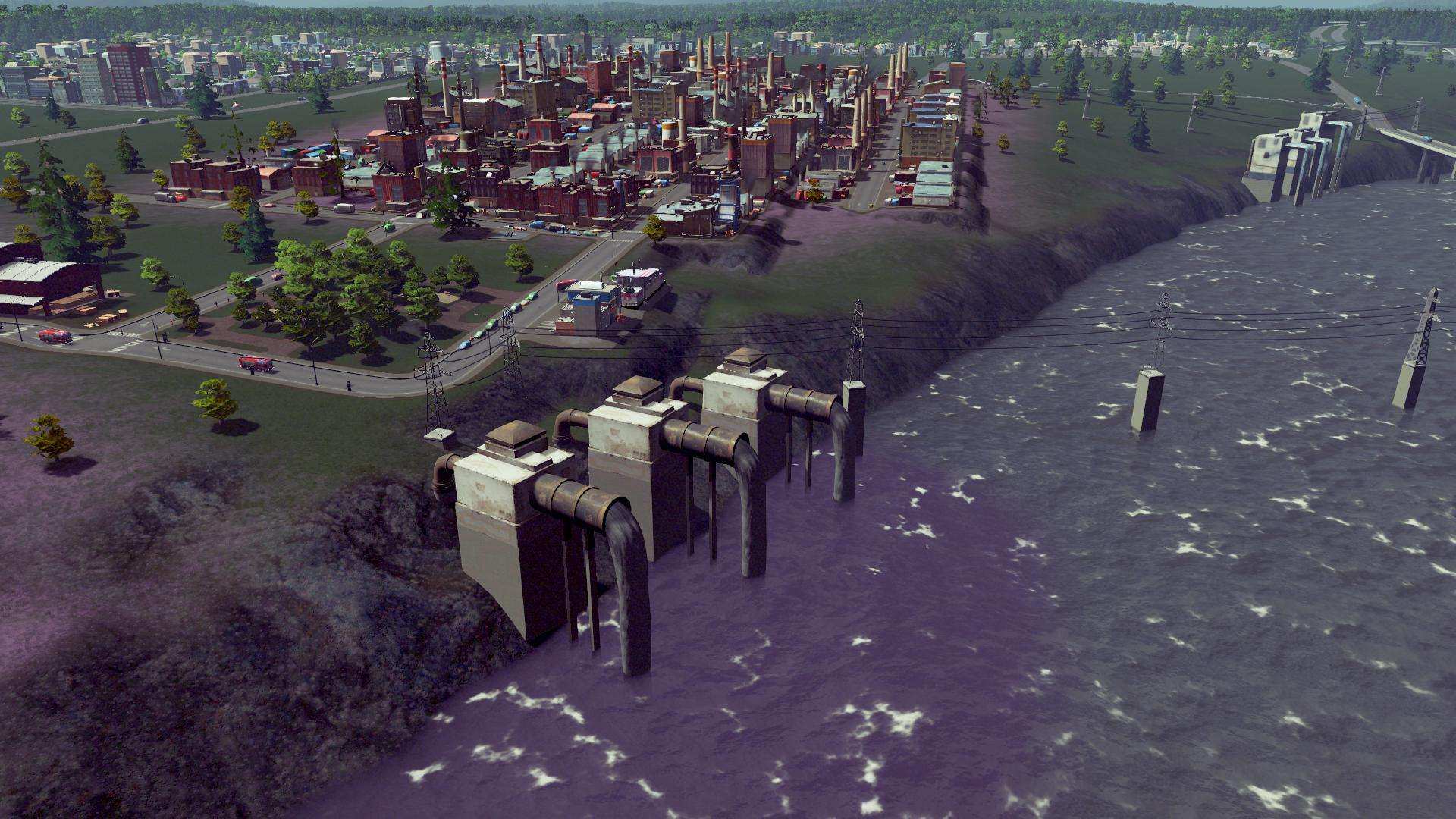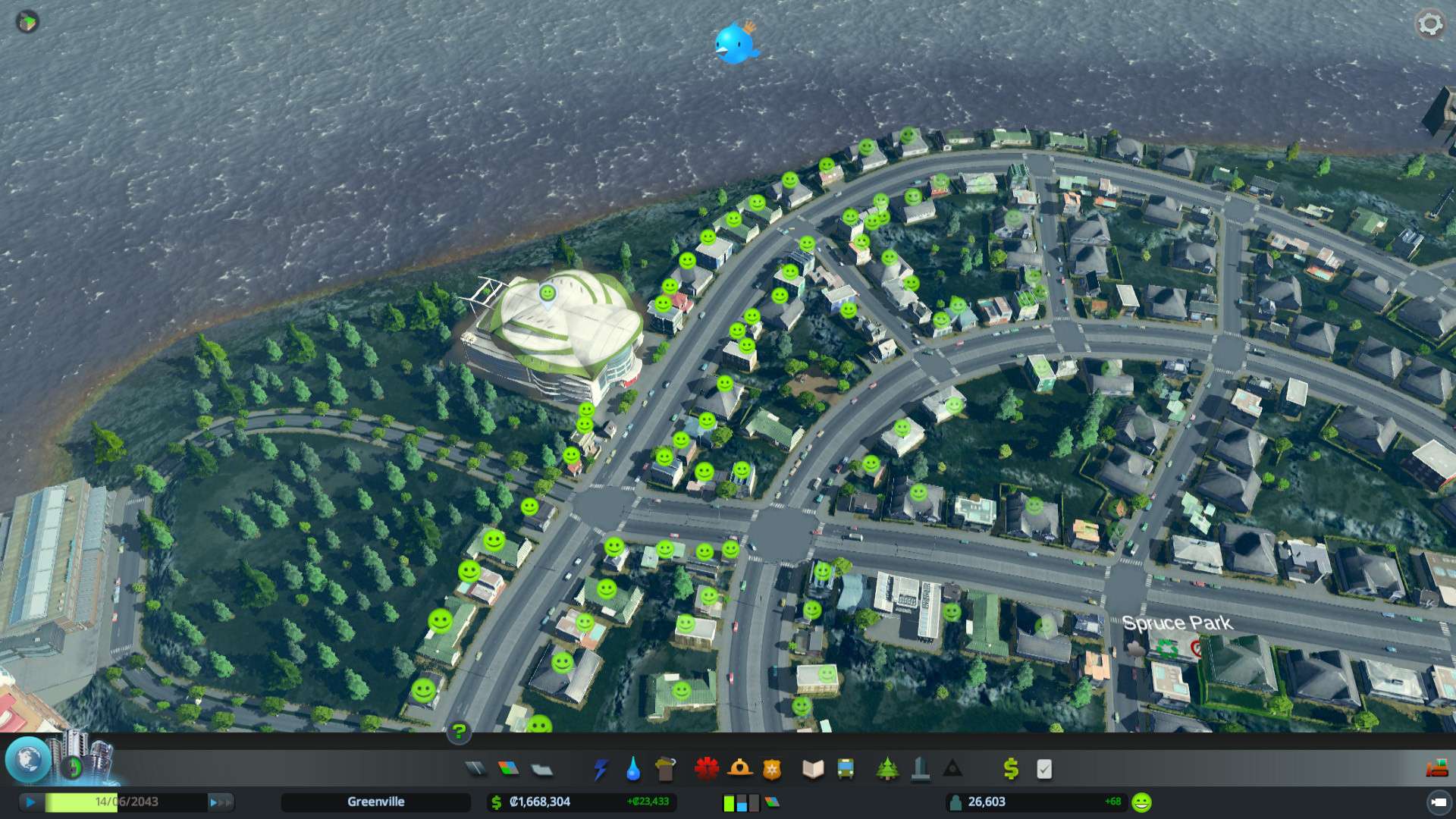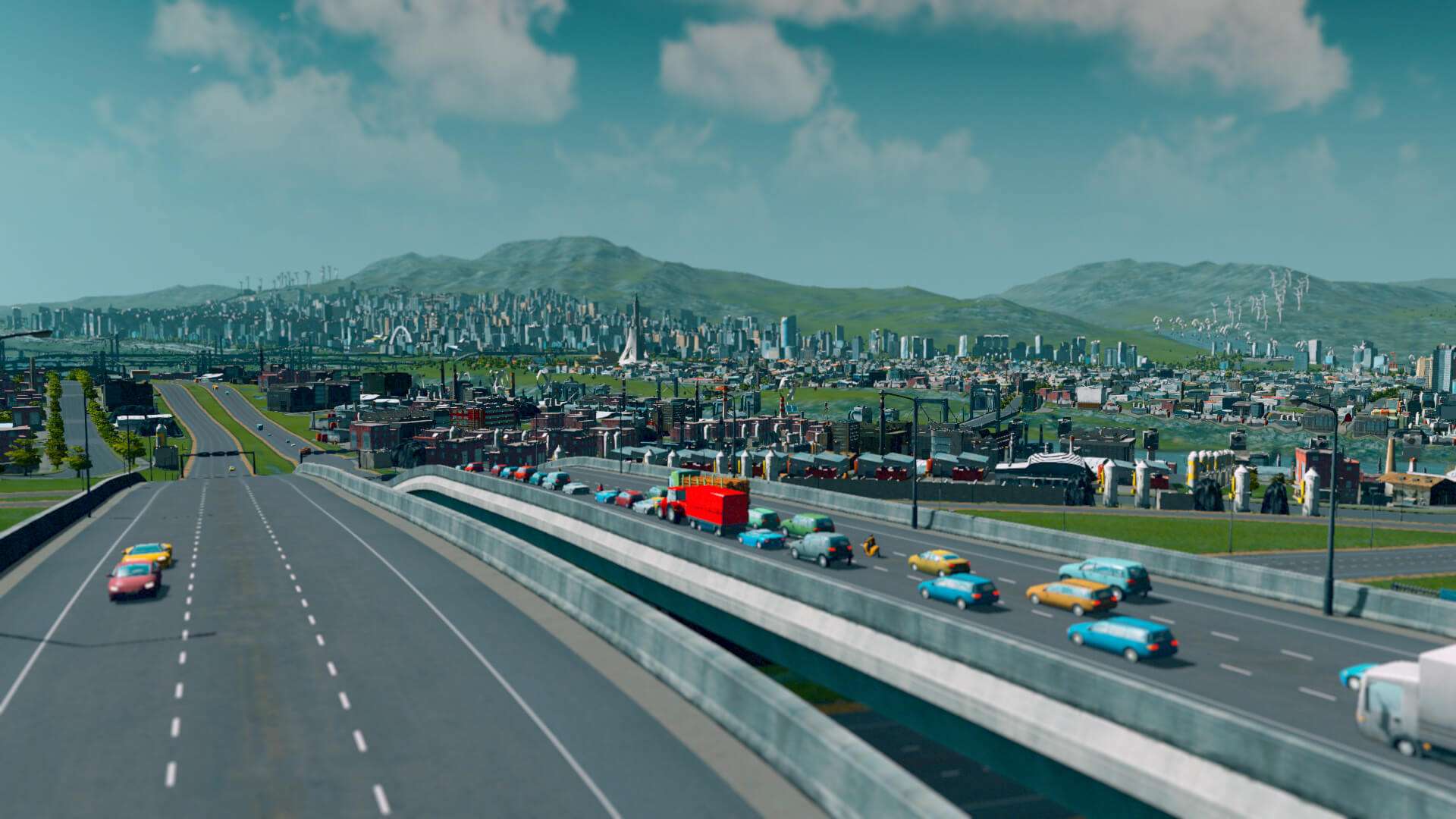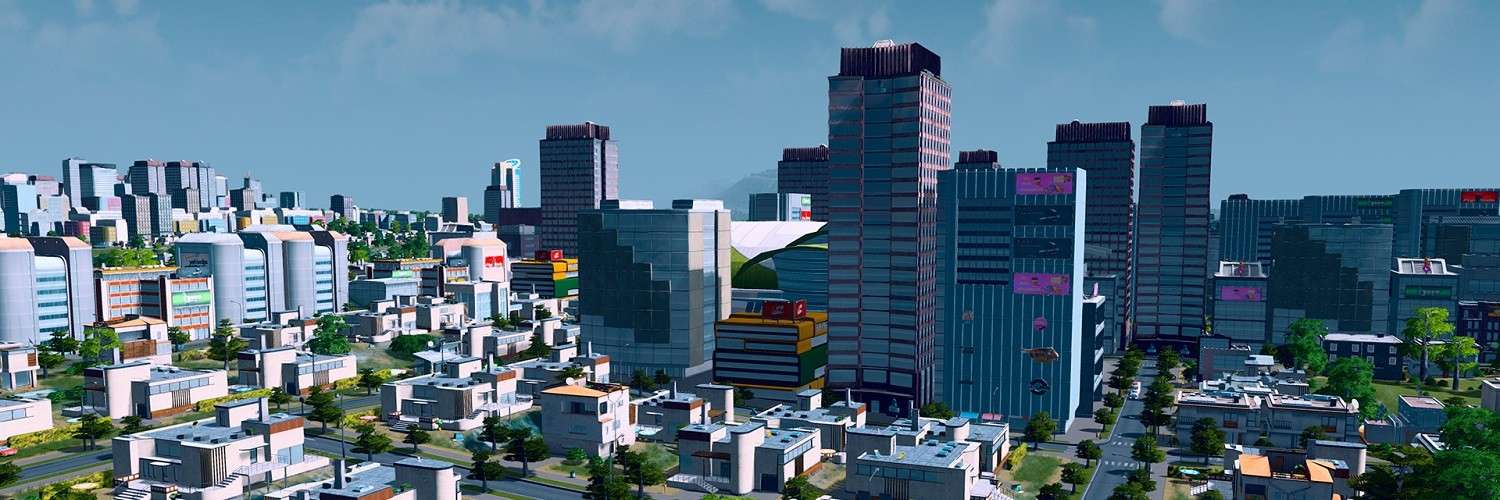
Cities: Skylines PC Review
I never got round to playing EA’s latest SimCity release, but the amount of negative press, awful online requirements (which I know are now gone), issues with the restrictions of the game, disabled features while the servers were overloaded, and fan comments surrounding the game put me off from ever giving it a chance. The developers, Colossal Order, and the publisher, Paradox, saw an opportunity arise with the fan fallout over SimCity, so Cities: Skylines was given the greenlight. The developers, who are clearly huge fans of old Sim City titles, have crafted a well designed city builder that welcomes people with open arms. This game feels like it was made for the fans of the genre and everyone who had their hearts broken by EA and Maxis’ restricted SimCity experience.
Building a new city is a unique experience for each individual player, but every city must be built starting somewhere, and that is picking from one of the nine available land designs. The city planning then begins by building a road that joins a highway to direct traffic to your new land. You’ll want people to move to your new street, so building residential houses, which colour the grid in green when deployed, will allow people to stay in your city. Of course, these houses need power and water, so creating a water system and having some energy to power everything is a must. From there, things open up and you can begin to plan out how your city will grow.
Amusingly, and I’m not sure if this is intentional, but the beginning piece of land is the exact size of the maximum city size in SimCity. This 2km x 2km space is an ideal size to begin constructing the city, as it lets the player focus without having to worry if they are using up all this free space correctly, which is what eventually happens when you branch out and purchase additional spaces – up to nine zones of 2km x 2km grids (36km square) – to create a massive city of, hopefully, your dreams. By the time you reach that point you will have gone through the various learning experiences and adapted to the game’s mechanics and systems.
One thing missing from Cities: Skylines is a dedicated tutorial. Instead, the game likes to offer tips through on-screen popups that explain the section the player has selected. It’s an interesting and old-school way of doing it, as it teaches the player each area of the game as they discover the feature at their own pace. Issues do arise because of the lack of a tutorial – not all of the on-screen tips are clear enough to understand the first time around and will most likely cause people to restart building their city from scratch, because something went horribly wrong that you didn’t pick up on from the on-screen help. I had half of my population puke their guts out because my water drainage system was too close to my water pump, causing sewage to flow back into the system, meaning that my little civilians of HardCrusty Shore were drinking their own pee and poo, which wasn’t pleasant for them.
A lot of the mechanics are easy enough to understand that getting a basic city up and running shouldn’t cause much trouble. There is plenty of feedback from the game’s UI to let you know what is needed to get to the city running smoothly. Is there demand for industrial or office complexes? Then select that option and colour in the grids where the buildings will be eventually constructed and populated. Need housing? Painting down some green squares will cause that area to become residential. Even water and power are straight forward. You need a pumping station to pull in water and waste disposal to get rid of it. Water pipes need to be joined to these, but they can also sprawl off and be planted under all the roads to give those streets water. A helpful zone of effectiveness surrounds the water pipes to show exactly what is covered, making it simple to see where water is flowing. Power needs routing from power stations or from healthy green energy sources, and if buildings are close together, then the use of power railings isn’t required, as power will jump from building to building. The important aspects of getting a city up and running are created in such a way that anyone will begin to see a city form within 30 minutes of playing with the basic building functions.
As the city begins to grow, then more thoughtful planning is needed to incorporate bigger and more important buildings and services. This is where the info pane on the left side of the screen and the game’s fake version of Twitter, called Chirper, come into play to feed the player information on how well the city is doing and if the civilians are happy with the area and how they are treated. Chirper is a good idea on paper, and it certainly helps in certain situations, such as when water is polluted and the civilians chirp about their dirty water, power outages, trash left on the streets, houses burnt down because there were no local fire brigade, or a dead body is still waiting in their house for a Hurst to come take it away. It’s also a nuisance with pointless repetitive chirps that hinder the overall helpfulness, like when a person chirps about a lost wallet (I must have seen this chirp about five times within the space of 15 minutes) or that their cat survived a fire. Chirper is a good idea, just filled with a lot of nonsense, which I guess is just like the real service.
Using the info pane is a lot less invasive and does a great job communicating the information. Basics like water and power will display how much is in use and how much is generated, while outlining the cities power and water flows to show areas covered by the resource. As population increases, so does the game’s progression, unlocking more buildings and features, but this also leads to more city issues. Traffic is a big problem, meaning you will need to see where the congestions appear with the colour schemed schematics and help reduce with better roads or public transport. Other issues need to scale in size as well, like bringing in more healthcare centres or schools to handle all the new residents, more police to maintain law, although, that seemed an area that didn’t matter all that much, as my citizens never seem to move into a life of crime.
My citizens did live an eventful life as each one is independently named and goes about their daily life. The personality of the city shines when you zoom in and stalk people going to work and back home again, seeing fire engines speed to a house on fire or eyeing up people walking the dog in the park. It’s not always a pleasure to view what’s happening, as pollution will cause the grass to die and discoloured water is a sight for sore eyes when your coastal line is a purple mess of waste, often caused by the early start to city building, because the water cleanser isn’t available yet or is too expensive for a young mayor’s budget. Money is always an issue in the beginning, and often you will need to build a cheaper alternative until the cash flow is on the increase. allowing options to purchase luxury monuments and buildings.
The option to take a loan is there when money is an issue, or you could increase tax as a last resort. Cities: Skylines includes district and policy options to separate the city into sections, such as naming an industrial area Work Zone and taxing them a higher rate than a small residential area that sits near some lush, green forests. Districts can go as deep as forcing buildings to focus on specific job roles – constructing industrial above a source of oil and designating it an oil distinct will make sure the efficiency of the workforce is increased. If pollution is an issue, then you can make areas smoke free or car free zones. The option to do the opposite exists by legalising drugs for recreational use. Either way, whatever you do, the growth and fall of the city brings character to it; with the only problem that spoils the credibility of a living, breathing city is the fact that it’s always sunny, there are never any disasters, and the world forgot what a day and night cycle is.
Colossal Order included full integration of the Steam Workshop, opening the game to a world of potential through community mods. Steam is littered with them at the moment, from small silly things, such as adding additional designs for buildings (McDonalds, KFC, Starbucks, and other famous chains and landmarks) or removing those annoying wallet chirps from the Chirpers notification list, to mods that improve the experience by unlocking all development spaces from the get go, improving the traffic info pane (in its original state it can be hard to figure out what is causing a jam), gaining infinite money (brilliant for city building insanity), or brand new maps, which some are simply fantastic. One person has even developed all of Los Santos as a land mass for you to begin building your own take on the infamous Grand Theft Auto V city. The potential to increase the options and life of the game is ridiculous, and while the core game is great, this option for community mods is one of the best decisions the developers could have done for a game like this.
While I have a lot of praise for Cities: Skylines and what it does right, it certainly isn’t safe from criticism and problems. Some of the issues I have briefly mentioned before can be fixed with mods, but real night life, weather and disasters missing from the game mean that there is no real end game or problem that sparks panic. Once you have a city built past a certain population mark, then it’s real easy to just keep it going and have the job done. It doesn’t feel as special to have a successful self-sufficient city compared to doing it in the first couple of Sim City games.
Cities: Skylines also sucks at explaining to the player why buildings are getting abandoned, as I often saw the abandoned house icon appear above property that was in busy areas, but with no idea why it was happening. These icons can also bug out. I had times where the game was telling me that the grass was abandoned or that trees were complaining about the tax being too high (last time I heard, trees only killed people in films like The Happening, not once did I hear they could complain about living expenses). Building complex train and bus routes is finicky, with the tools in place making it hard to lay down rail or roads exactly how you want. Issues could be solved through patches, and no doubt the plenty of downloadable content that Paradox likes to offer fans, so in a few months these issues might vanish, but as it stands, there are improvements needed to make Cities: Skylines the city-builder to kill all city-builders. As it stands, it’s just the best we’ve had in the last few years, as it’s a genre that fell off the radar for a while.
There is a lot to love about Cities: Skylines and it gets a lot right for fans of the genre who felt crushed by SimCity’s disappointing release. It’s a very fun game that allows anyone to enjoy building a city without much hassle, no matter your previous experience with the genre. It’s only when things get complex that problems begin to appear and need clearer explanations, but once that hurdle is passed, then there isn’t anything disastrous to stop this game from eating up all your free time. It is, after all, the best city simulator released since aeons before, and with signs of a lot more to come from the mod community and the developers, the future is looking seriously bright for Cities: Skylines that could see it become the king of city simulation.

